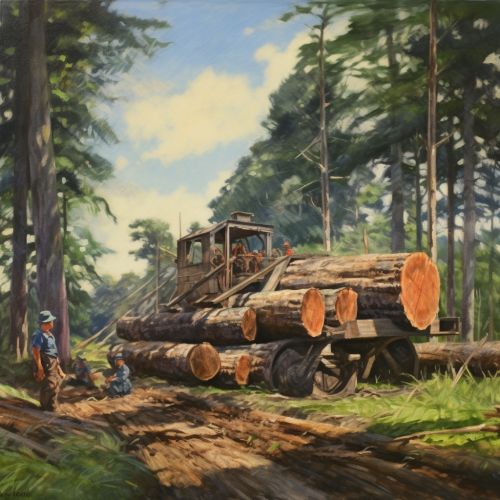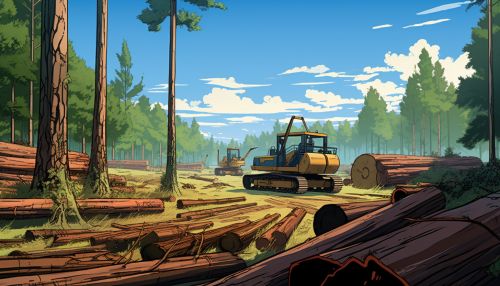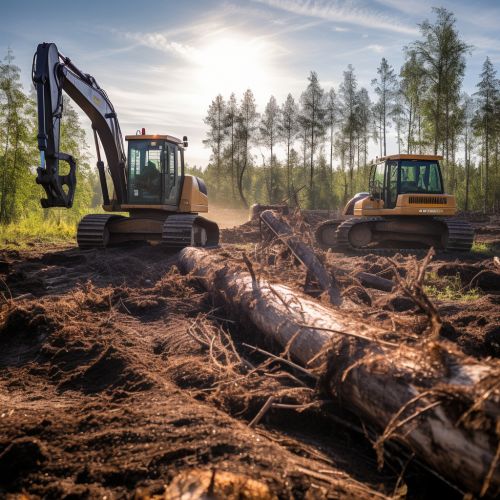Sustainable Forest Management
Introduction
Sustainable Forest Management (SFM) is a method of managing forests in a way that maintains their biodiversity, productivity, regeneration capacity, vitality, and potential to fulfill relevant ecological, economic, and social functions at local, national, and global levels, without causing harm to other ecosystems. Sustainable practices are crucial in forest management to ensure the long-term health and survival of these vital ecosystems.


Principles of Sustainable Forest Management
The principles of SFM are based on the idea that forests should be managed in a way that preserves their ecological integrity while providing goods and services to meet society's needs. These principles include maintaining forest health and vitality, conserving biodiversity, and ensuring the sustainable use of forest resources.
Maintaining Forest Health and Vitality
Maintaining the health and vitality of forests involves monitoring and managing for pests, diseases, and fire. It also involves maintaining the forest's ability to regenerate after disturbances, such as logging or natural disasters.


Conserving Biodiversity
Biodiversity conservation in SFM involves protecting and managing the variety of life forms found in forests, including trees, other plants, animals, and microorganisms. This can involve creating protected areas, managing habitats for specific species, and maintaining genetic diversity within tree populations.


Sustainable Use of Forest Resources
The sustainable use of forest resources involves managing forests in a way that provides a sustainable supply of timber, non-timber forest products, and ecosystem services, without degrading the forest ecosystem. This can involve practices such as selective logging, agroforestry, and the sustainable harvest of non-timber forest products.
Practices of Sustainable Forest Management
SFM practices can vary widely depending on the specific goals of the management plan, the type of forest, and the local ecological, social, and economic conditions. However, some common practices include selective logging, reduced-impact logging, and the creation of protected areas.
Selective Logging
Selective logging involves harvesting certain trees while leaving others to continue growing. This can help maintain the forest's structure and biodiversity, and can also reduce the impact of logging on the forest ecosystem.


Reduced-Impact Logging
Reduced-impact logging (RIL) is a set of logging practices designed to minimize the environmental impact of timber harvesting. RIL practices can include careful planning of logging operations, the use of low-impact logging equipment, and the implementation of post-logging restoration measures.


Protected Areas
Creating protected areas is a key strategy in SFM. These areas can be set aside for the conservation of biodiversity, the protection of endangered species, or the preservation of unique or valuable ecosystems.


Challenges and Opportunities in Sustainable Forest Management
While SFM offers many benefits, it also presents a number of challenges. These include balancing the various demands on forests, dealing with the impacts of climate change, and addressing the social and economic aspects of forest management. However, there are also many opportunities for innovation and progress in SFM.
Balancing Multiple Demands
Forests are often subject to multiple, sometimes conflicting, demands. These can include the need for timber production, biodiversity conservation, recreation, and the provision of ecosystem services. Balancing these demands can be a complex task, requiring careful planning and management.


Climate Change Impacts
Climate change poses a significant challenge to SFM. Changes in temperature and precipitation patterns can affect forest health and productivity, and can also increase the risk of pests, diseases, and wildfires. However, forests also play a key role in mitigating climate change by absorbing carbon dioxide from the atmosphere.


Social and Economic Aspects
SFM also involves addressing the social and economic aspects of forest management. This can include ensuring that local communities benefit from forest resources, promoting fair and equitable access to forest resources, and integrating forest management with broader land-use planning and development strategies.


